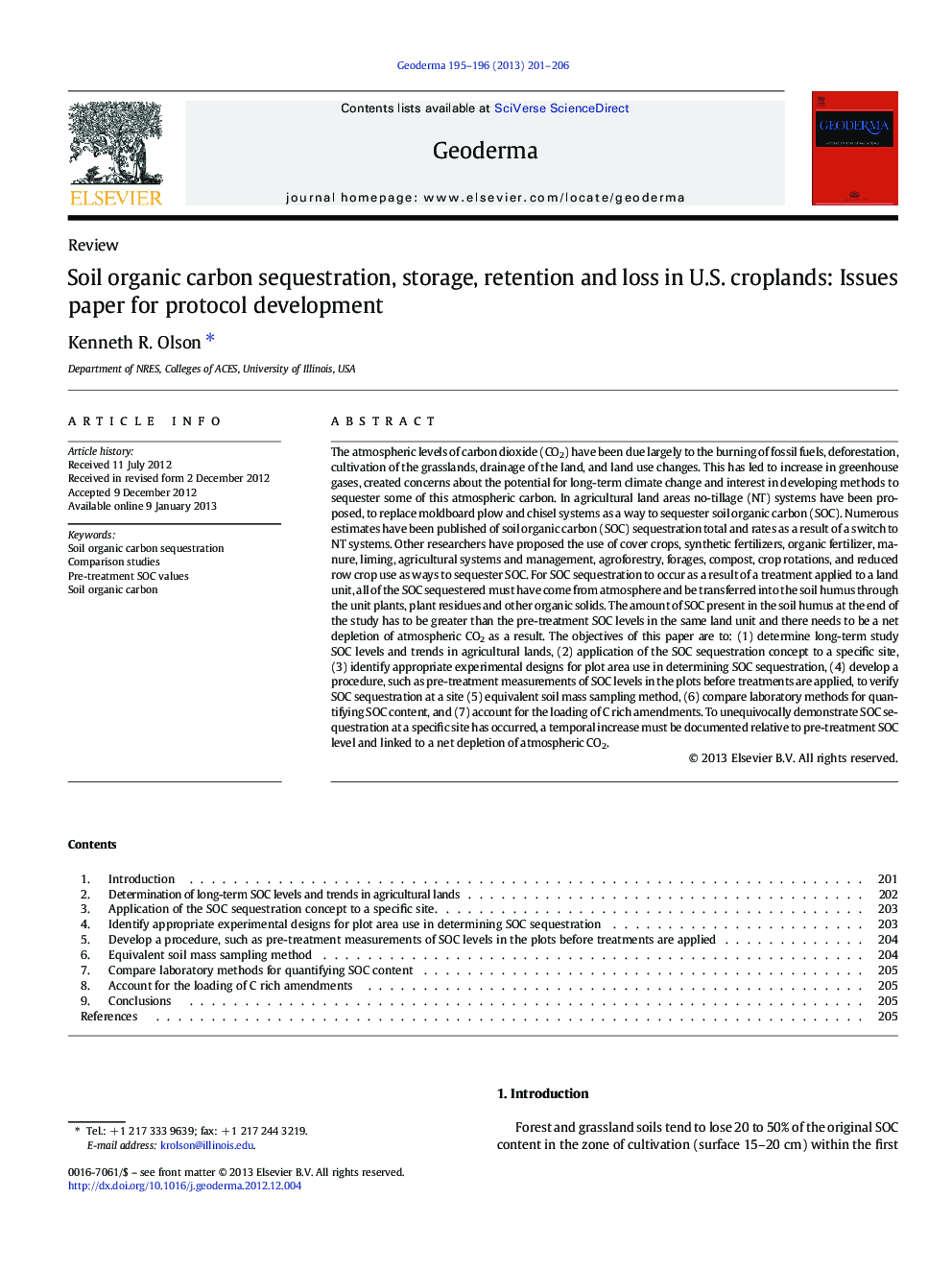| کد مقاله | کد نشریه | سال انتشار | مقاله انگلیسی | نسخه تمام متن |
|---|---|---|---|---|
| 4573556 | 1629489 | 2013 | 6 صفحه PDF | دانلود رایگان |

The atmospheric levels of carbon dioxide (CO2) have been due largely to the burning of fossil fuels, deforestation, cultivation of the grasslands, drainage of the land, and land use changes. This has led to increase in greenhouse gases, created concerns about the potential for long-term climate change and interest in developing methods to sequester some of this atmospheric carbon. In agricultural land areas no-tillage (NT) systems have been proposed, to replace moldboard plow and chisel systems as a way to sequester soil organic carbon (SOC). Numerous estimates have been published of soil organic carbon (SOC) sequestration total and rates as a result of a switch to NT systems. Other researchers have proposed the use of cover crops, synthetic fertilizers, organic fertilizer, manure, liming, agricultural systems and management, agroforestry, forages, compost, crop rotations, and reduced row crop use as ways to sequester SOC. For SOC sequestration to occur as a result of a treatment applied to a land unit, all of the SOC sequestered must have come from atmosphere and be transferred into the soil humus through the unit plants, plant residues and other organic solids. The amount of SOC present in the soil humus at the end of the study has to be greater than the pre-treatment SOC levels in the same land unit and there needs to be a net depletion of atmospheric CO2 as a result. The objectives of this paper are to: (1) determine long-term study SOC levels and trends in agricultural lands, (2) application of the SOC sequestration concept to a specific site, (3) identify appropriate experimental designs for plot area use in determining SOC sequestration, (4) develop a procedure, such as pre-treatment measurements of SOC levels in the plots before treatments are applied, to verify SOC sequestration at a site (5) equivalent soil mass sampling method, (6) compare laboratory methods for quantifying SOC content, and (7) account for the loading of C rich amendments. To unequivocally demonstrate SOC sequestration at a specific site has occurred, a temporal increase must be documented relative to pre-treatment SOC level and linked to a net depletion of atmospheric CO2.
► A protocol is proposed to validate the amount and rate of SOC sequestration.
► Land unit boundaries need be incorporated into definition of SOC sequestration.
► Pre-treatment baseline measurements are essential to all SOC sequestration studies.
► The treatment needs to result in a depletion of CO2 in the atmosphere.
► Credible SOC sequestration rates are needed for various management treatments.
Journal: Geoderma - Volumes 195–196, March 2013, Pages 201–206